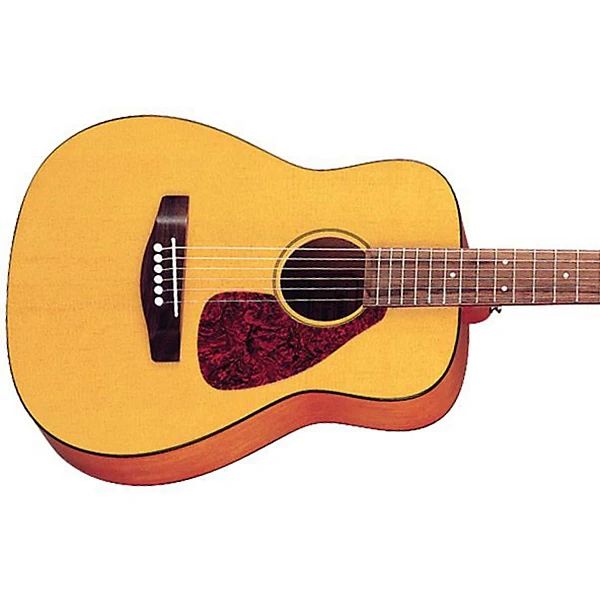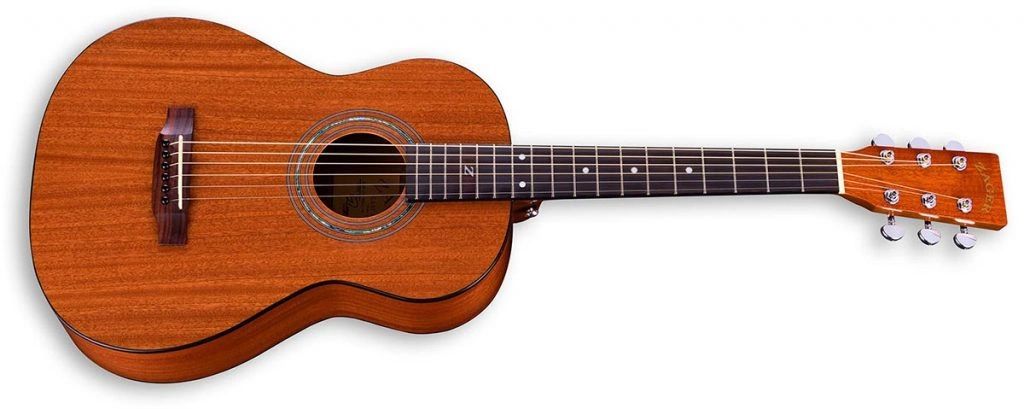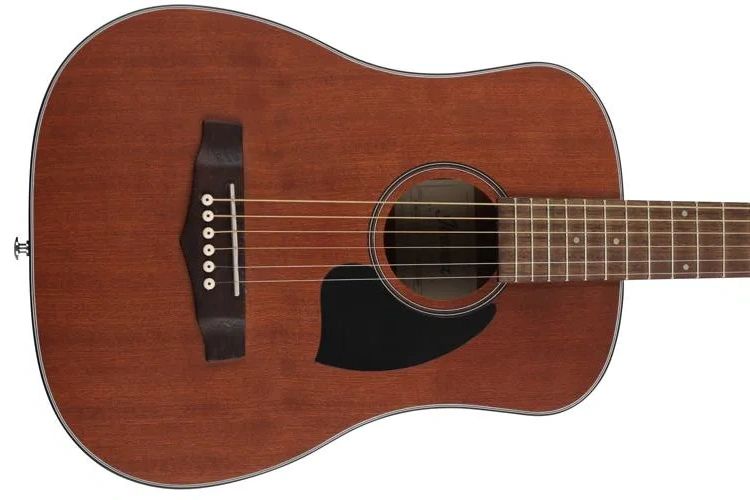When you introduce kids to the world of your music, you’re giving them a gift that grows along with their skills. But it requires the right instrument to help them navigate their ambitions. Otherwise, you could end up with an instrument that underperforms, goes in and out of tune, and is uncomfortable to play.
Although part of guitar shopping is about preference, some universal standards exist for a great guitar, including construction and comfort. Here’s what to know about finding the best acoustic guitar for kids, what to consider, and how to choose.
Size Matters
Size is among the most crucial parts of picking the best acoustic guitar for kids. They need to be comfortable to play, but there is a caveat here. A smaller-sized guitar, like a travel or parlor guitar, is usually a better fit for kids and can grow with their skills. If you have a teenager with large hands, they may be completely at ease with a more prominent guitar.
Younger kids have hands that are small, and it’s going to be challenging, no matter the size, to get used to playing the guitar. So even a perfectly sized guitar could prove uncomfortable from time to time. Instead of how comfortable it is while playing the guitar, focus on how it feels when your child holds it.
Quality Construction

Whether your child has already been playing for a while or is new to the guitar, quality matters. A well-constructed guitar makes learning more accessible and more enjoyable to play. Poorly made guitars usually don’t hold their tune, making it frustrating when you can’t match the sound of the song you want to master.
Guitars with solid wood tops usually produce a better sound than those with laminated tops. It’s also wise to look for guitars with good intonation and adequate action, which means the distance between the strings and the frets makes learning and playing more pleasant.
Durability
Kids are notoriously rough on their personal belongings (and their parents stuff), and finding a durable guitar should factor into your purchasing decision. Opt for an instrument with a sturdy build and proper bracing. It’s true that you won’t always know if a guitar is of high quality, but if it’s made from hardwood and well-constructed, you can assume it will endure.
Just to be safe, you should also choose a guitar with a reliable return policy and warranty. Be aware that some guitar brands offer a limited warranty that may only cover manufacturer defects and nothing else. Other brands, like Zager, guarantee the hardware and other parts of the guitar.
Playability
Guitar playability is integral to learning the craft, whether you’re a kid or an adult. A guitar with a comfortable neck profile and low-string action is usually the best acoustic guitar for kids. This type of guitar makes it easier to press down the strings and form chords without straining their fingers. Everything from how comfortable the neck is to hold to how the guitar sits in your child’s lap can impact playability.
Budget
A dirt cheap guitar won’t make the list of the best acoustic guitars for kids. It won’t hold its sound, is probably flimsy, and is different to play. High-end guitars are usually regarded as offering superior sound, but that’s only sometimes the case. Sometimes brands are celebrated for their names, experience quality control issues, or send their instruments to be made in a factory. A handcrafted guitar will usually sound better than anything you’ll find in a factory.
You should focus on the middle ground and whether or not the guitar is handmade, uses quality tonewood, and is comfortable to play. While high-end guitars offer superior sound and craftsmanship, there are excellent options available at various price points. Finding a balance between quality and budget is essential, especially when selecting a guitar for a child who is just starting their musical journey.
Top Acoustic Guitars for Kids
If you’re ready to go shopping, here are some of the top acoustic guitars for kids.
Yamaha JR1 Mini Folk Guitar: The Best Guitar for Your Budget

Yamaha produces a wide variety of instruments, from keyboards to guitars. When it comes to guitars, they’re known for their budget-friendly prices and reasonable quality and tonality.
The Yamaha JR1 Mini Folk Guitar is a 3/4-size acoustic guitar designed with smaller or younger players in mind. It features a compact size and spruce top, a rosewood fingerboard, and a meranti body for a warm and balanced tone. However, playing on higher frets may prove a struggle, so it is probably a better choice if you’re on a tight budget and have a child willing to push through the challenges.
The Yamaha JR1 Mini Folk Guitar retails for $159.99.
Zager Travel Guitar: The Best All-Around Acoustic Guitar for Kids

Denny Zager, a member of the successful 1960s band Zager and Evans, founded Zager Guitars. He began making high-quality, handmade guitars known for their playability and comfort. Lady Gaga, Johnny Cash’s guitarist Dave Roe, and the daughters of Hank Williams and Loretta Lynn all play Zager guitars.
Here’s where Zager Guitars stacks up for the best acoustic guitars for kids: Their travel guitars are 25% smaller, with a neck design that’s two inches shorter than their full-size guitars. Adults who want a smaller instrument, those with shorter arms, and kids prefer travel guitars for their smaller size. If you have an older child but still don’t want a full-size guitar, Zager parlor guitars that are about 20% smaller are also a good bet.
Zager Guitar’s Travel Size Solid African Mahogany Acoustic retails for $695, and their 38-inch Parlor Size Solid African Mahogany Acoustic retails for $795.
Taylor GS Mini Series Guitars: The Best Iconic Acoustic Guitar for Kids

If you’re into the idea of an iconic guitar for your child and don’t mind investing more, the Taylor GS Mini series is a good choice. It’s an alternative to their adult-sized version without compromising on brand recognition that may be important to your family.
Taylor’s Mini is a smaller, scaled-down version of Taylor’s iconic Grand Symphony shape. It’s designed to be smaller, cheaper, and more manageable for kids, and it holds up on playability and the sound quality you’d expect from Taylor. With solid wood construction and hand craftsmanship, it holds up to your kids’ budding ambitions.
The GS Mini Series Guitar retails for $499.99.
Cordoba Protege C1 3/4 Size Acoustic Guitar: Best for Classical Musicians

Cordoba has built a reputation as a premier classical guitar company with high-quality construction. They came out with a pint-sized version that’s more comfortable and affordable for smaller players and kids.
The Protege C1 3/4-Size Acoustic Guitar was created with aspiring classical musicians in mind. It features a spruce top, mahogany back and sides, and high-tension Savarez strings tuned to a standard E. With a wood-inlaid mosaic rosette and nickel tuning machines, it’s all topped off with a high gloss finish and strong neck stability.
The Cordoba Protege C1 3/4-Size Acoustic Guitar retails for $499.99.
Ibanez PF2MH Mini Dreadnought: Best Portable Guitar

The Ibanez PF2MH Mini Dreadnought is a 3/4-sized acoustic guitar constructed with a high-quality mahogany top, back, sides, and neck. Although this guitar doesn’t have a solid top and can scratch easily, it’s still easy to play with a warm sound at the right price.
Although all of the guitars on this list are small, the Ibanez is highly portable, with a diminutive size, a warm sound, and a gig bag. The price also won’t make you wince if your child accidentally damages it on the road
The Ibanez PF2MH Mini Dreadnought Guitar retails for $159.99.
Empowering Your Kid to Succeed at Guitar
Remember, the guitar is just the first step in the journey. Not all kids learn by ear or can take the reins on scaling up on their dreams. Your kid may need guitar lessons, dedicated time to play, or resources to help them reach their goals. Empower them to succeed by letting them choose the music they want to learn and supporting their progress.
Sometimes kids need a mentor to help guide them through a new skill. If they’re prone to arguing with you and find it challenging to learn from you, bring someone into the process. Hire a guitar teacher, tap a friend to help, or drop them off at a music school once a week to learn with other kids.
Need More Help Finding an Acoustic Guitar for Kids?
Read some of our latest articles to get up-to-date info and tips on your guitar selection.
- Top Rated Acoustic Guitars
- Which is the Best Acoustic Guitar Brand?
- Easiest Acoustic Guitars to Play
Next Steps
Introducing a child to the guitar is a process of narrowing down playability and quality. If you start there, you can work your way through style preferences, size, and budget to find the best acoustic guitars for kids. It’s also about encouraging your kids to stick to a schedule and learn to love the process of learning an instrument and mastering the craft.
